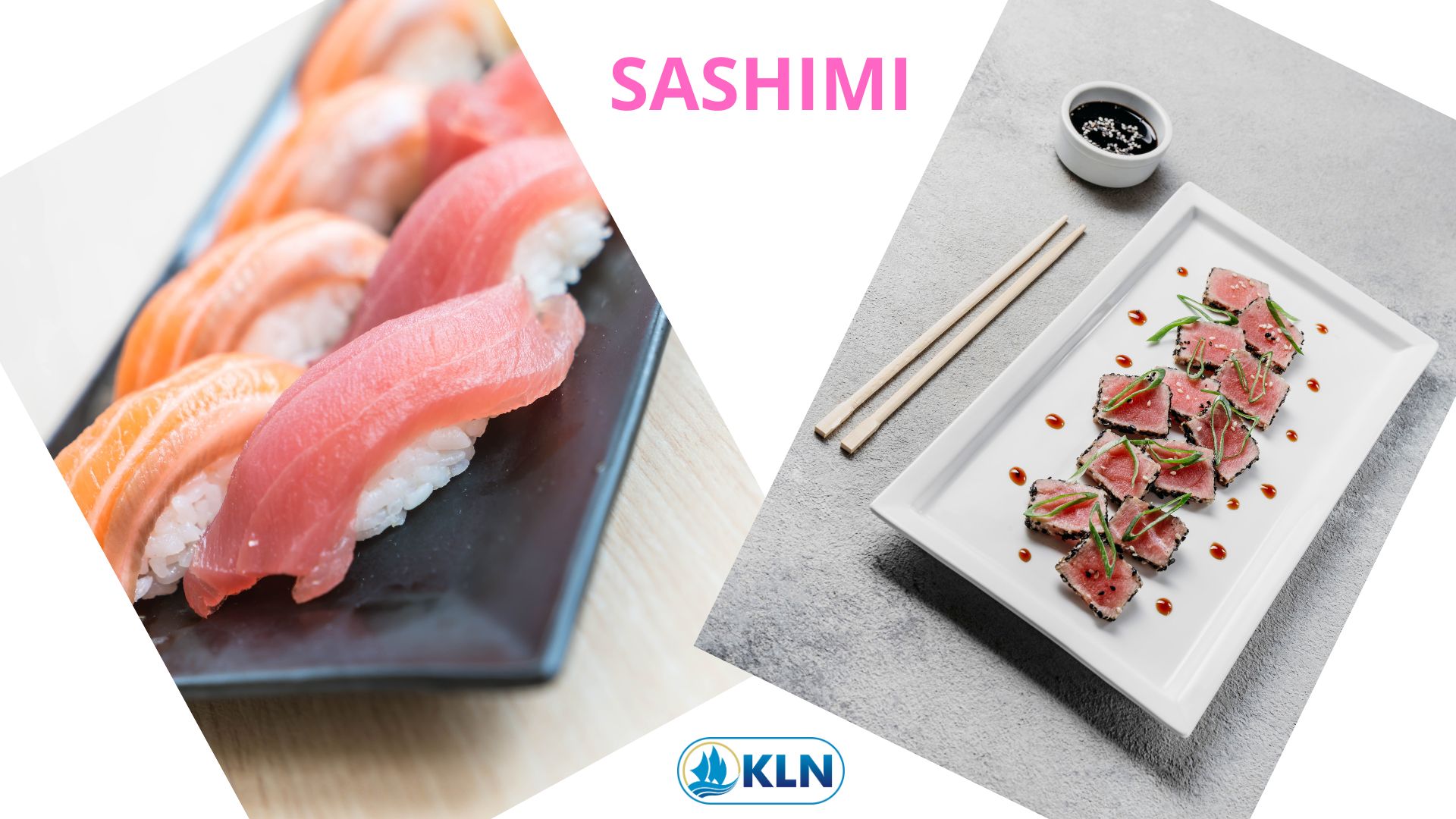Sashimi
By. Najih - 13 Jun 2024
Sashimi is the meat of a fish that has been sliced and left to be eaten raw, fresh, and delicious, with each slice usually being about 2 inches long and half a centi-meter thick. Sashimi often comes with sides of grated wasabi and soy sauce and is served atop threads of daikon radish with a shiso leaf for garnish. Sometimes dandelions or little plastic grass-shaped dividers decorate the tray, too, especially at supermarkets. Fresh sashimi has a restrained flavour compared to the cooked versions of their fish, and the texture of the meat itself varies by species. Some fish have a high enough fat content that they seem to melt in your mouth, while others have a bouncy, firm texture.
Types of Sashimi
Katsuo (Bonito / Skipjack Tuna)
Katsuo is one of the most popular kinds of tuna in Japan, and one of the most popular ways to eat it is “katsu no tataki” style, lightly seared on the outside and raw the inside, served thinly sliced with ponzu citrus and garlic or ginger.
Sake (Salmon)
Salmon is easily recognized for its bright orange colour. It ranges from lean to fattier pieces, with salmon belly coming at a premium price due to its extra fattiness.
Maguro (Bluefin Tuna)
Maguro is one of the most highly prized fish around the world. It’s popular to serve bluefin tuna as a triumvirate of akami (lean tuna), chutoro (medium fatty tuna), and otoro (fatty tuna).
Ahi (Yellowfin & Bigeye Tuna)
Ahi is the name for two types of tuna: yellowfin tuna, which has a mild flavour and a firm texture making it perfect for sashimi, and bigeye, which has a higher fat content and buttery flavour.
Engawa (Halibut)
A type of flounder fish, halibut makes for a very good thin-cut sushi. Engawa is the portion of sashimi cut from along the flounder's fin. The texture is a bit tough, but there's also a fatty portion that's high in collagen.
Ika (Squid)
Squid becomes thin and flat when cut into pieces, so it’s usually julienned into thin slivers to make the presentation more attractive for sashimi.
Tako (Octopus)
Octopus is typically served boiled as it’s quite chewy, or even rubbery when not well prepared. In order to be served raw for sashimi, the octopus must be very thinly sliced in order to be easily chewed and to draw out its subtly sweet aroma.
.jpg)
The Impact of HACCP-Based Integrated Quality Management Programs on the Quality and Competitiveness of Fresh Demersal Fish Products
 and Employee Productivity on the Demersal Fish Processing Floor.jpg)
The Correlation Between Occupational Health and Safety (OHS) and Employee Productivity on the Demersal Fish Processing Floor

Human Resource Management Challenges and Training Needs in Implementing HACCP Quality Standards within the Fish Processing Industry

The Legal Shark Value Chain: Identifying Critical Control Points for Cost Efficiency and Value Enhancement from Catch to Consumer



.jpg)
 in Meeting Global Protein Demand Sustainably.jpg)